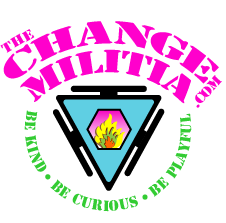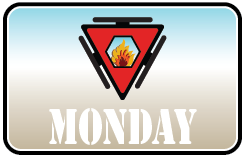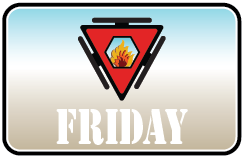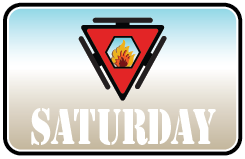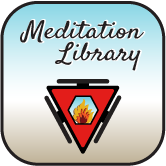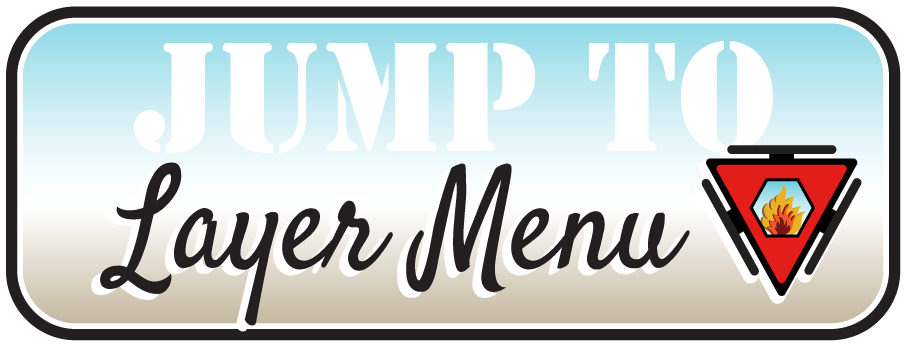Layer Four, Week Two – Sunday
- Morning – Watch Videos and Read Instructions Hula Breath and Eyes Closed Balance
- Evening – Read Layer Four, Week Two Concepts
- Evening – Practice Eyes Closed Balance
Sunday’s Focus
Regularly through the day take a Current30 and then assess your general feeling of balance. Ask yourself if you are feel centered in your bodies, stress-free, and vital. Do you feel effortlessly fluid? Make an assessment and give it a number from 1-10. Try to do this 8-12 times a day (set a timer on your phone if that would help).
Sunday’s Concepts
You might be asking yourself why Balance is such a big deal and why I am choosing to spend another week talking about it. Balance begets fluidity, vitality and effortlessness. When you are balanced, everything gets easier, more fluid, and more fun.
Want to have sustainable success: stay balanced. Want to be increasingly happy, fulfilled, and grateful: stay balanced. Want to have a fantastic relationship, wonderful friends, and carefree family interactions: stay balanced. Want to eliminate stress, feeling stuck, and overwhelmed; stay balanced.
Balance has an infinite number of interconnecting layers, levels, or tiers. The first level of balance is between your bodies. To achieve balance, generate an equal amount of energy in each of your bodies: physical, mental, emotional, subtle, and environmental.
Layer Four, Week Two – Monday
- Morning – Practice Hula Breath
- Morning or Evening – Read Monday Concepts
- Evening – Practice Eyes Closed Balance
Monday’s Focus
Continue with yesterday’s balance assessment. Assess your general feeling of balance. Ask yourself if you are feel physically, mentally, and emotionally centered, stress-free, and vital. Give it a number from one to ten.
Monday’s Concepts
We’ve talked about the other bodies; environmental is the energy you spend on things outside of your body like relationships, work, and interactions with the elements, nature, animals, humans, and plants. It is the mental and emotional value you give to what others think, your judgments, and feelings about your world, and what we have called external focus in previous layers. It is the energy of interactions.
Your Environmental Balance is the percentage of your internal energy that you share with other people, things, ideas, and causes (Changing Your World from the Inside Out!). The key to elevating your environmental energy balance is to increase your capacity while you maintain your internal balance and then radiate your magnificence out into the world.
The first level of balance is the bodies. The next level of balance consists of seven components: Focus, Speed, Endurance, Strength, Flexibility, Stability, and Rejuvenation. Each of these seven components will have it’s own balance points and each will have an affect and effect on each of the bodies and each other. They interpenetrate each other like scents combining to make other scents. The resulting scent has aspects of both but also a smell of its own.
Layer Four, Week Two – Tuesday
- Morning – Practice Hula Breath
- Morning or Evening – Read Tuesday Concepts
- Evening – Practice Eyes Closed Balance
Tuesday’s Focus
Spend the day focusing on your physical balance. Track how your physical body feels. Do you feel strong, flexible, and resilient? Are you relaxed, smooth, and energized? Do you have rhythm? Make an assessment and give it a number from 1-10. Try to do this 8-12 times today.
Tuesday’s Concepts
You might be asking yourself why knowing about balance, bodies, and components matters. You might not feel drawn to the complexity. The more you know, the more you feel, the more you can discern transitions; the easier it will be to make better choices sooner, get more done, be happier, have better relationships, and have enough energy, momentum, and drive to make a difference in your life and the lives of others.
Watch this downhill ski racer in slow motion and you will be amazed how many micro-movements she makes to stay balanced. The more balanced she is, the faster she goes. Unbalanced skiing leads to the agony of defeat. The same is true for unbalanced relationships, careers, health, and happiness.
And most importantly, realize that she isn’t consciously considering every micro-movement before she makes it. She has achieved her success by being curious, passionate, and determined. She learned what worked, focused on improving, and made incremental success a habit.
In the following weeks, you will be given a ton of information. You won’t be expected to remember it. Use it to form a foundation of understanding, a well to dip into. Fluid balance is something that you will consciously, persistently, and consistently fine tune. The rewards will stratospherically outweigh the costs. Maintain curiosity and playfulness, have fun, and explore with a sense of wonder and fascination.
Layer Four, Week Two – Wednesday
- Morning – Practice Hula Breath
- Morning or Evening – Read Monday Concepts
- Evening – Practice Eyes Closed Balance
Wednesday’s Focus
Today, track your mental balance. How clear, focused, and creative does your mind feel? Are you able to mentally keep up? Do you feel stressed or overwhelmed? Are you hyper-stimulated or edgy? Make an assessment and give it a number from 1-10. Try to do this 8-12 times.
Wednesday’s Concepts
The first of the seven components is Focus. Focus will exist in each of the bodies (physical, mental, emotional, and environmental).
Focus achieves balance by equally combining agility, accuracy, and clarity.
- Agility is your ability to be alert, active, quick, and nimble. (A kid playing an interactive video game.)
- Accuracy is precision, coordination, structure, and intentionality. (An Olympic ice skater.)
- Clarity is made up of equal parts transparency, comprehension, context, and relevance. (A math genius.)
Remove any of the subcomponents and your focus will be compromised.
Reread this paragraph and see if you can feel each of the components and each of the subcomponents. Connect to them. Connect them to your everyday life. Where do you have agility and what does it feel like? In what aspect of your life are you accurate? When do you feel extremely clear about something?
Agility – I love to bound up trails hopping from rock to rock, using whatever obstacles I can as launch pads. The more focused I am, the faster I go, and the more fun it is.
Accuracy – I bake with a precision scale. I measure everything to the exact gram. That precision increases my chances of success and repeatability.
Clarity – I am very adept at understanding cause and effect in physical and energetic movement. That ability to comprehend relevance and context allows me to be a better teacher.
Focus not only happens on the mental level. What might emotional focus feel like to you?
Emotional agility would be:
- Alert (aware of the emotional ebbs and flows)
- Active (vibrantly feeling sensations, emotions, and interactions)
- Quick (present and responsive to transitions in mood and energy)
- Nimble (dexterous and able to feel multiple emotions simultaneously)
Emotional accuracy would be:
- Precise (discerning the actuality of the moment: no stories, projections, or drama)
- Coordinated (harmonious, cooperative, and collaborative)
- Intentional (conscientious, purposeful, and autonomous)
- Structured (organized, well-defined, and connected)
Emotional clarity would include:
- Comprehension (understanding and empathy)
- Transparency (complete, direct, and clear),
- Relevance (pertinent, applicable, and congruent)
- Context (setting, background, and circumstances)
I usually do a pretty good job sharing what I am feeling, being emotionally focused. I can focus on my internal and external emotional landscapes and verbally paint an accurate picture. I feel deeply and usually express my feelings into a way that is free of projection, demand, or judgment. Emotional focus shows up as transparency, intimacy, and self-confidence.
Layer Four, Week Two – Thursday
- Morning – Practice Hula Breath
- Morning or Evening – Read Thursday Concepts
- Evening – Practice Eyes Closed Balance
Thursday’s Focus
Emotional balance is on your agenda today. Is your emotional playing field level or is it more like a roller coaster? How quickly does your emotional pendulum swing? Are you hyper-sensitive or emotionally sluggish? How easy or difficult is it for you to be intimate? Make an assessment and give it a number from 1-10. Try to do this 8-12 times.
Thursday’s Concepts
Physical focus is largely your body’s expression of your mental and emotional focus. Physical focus is expressed as action (movement with agility, accuracy, and clarity). Physical focus is efficient, effective, and productive. Movements that are purposeful, complete, direct, and efficient are all focused.
Maintaining your balance regardless of the changes in your orientation requires focus. Standing on one leg while you chew gum, Hula-Hoop, and juggling chainsaws takes a lot of physical focus.
Physical focus includes hand/eye coordination and all the other forms of proprioception. Watch how Toni Bou manipulates his body. He is doing a thousand things simultaneously. He is working two brakes, the accelerator, and making huge shifts in his body weight.
Proprioception is your ability to discern where you and your parts are in space and in relation to other things. If you are clumsy, you lack focus. If you regularly poke yourself or others in the eye, you lack proprioceptive awareness … or you just like to poke eyes.
Physical focus includes agility. Rock-hopping up a dry riverbed, requires focus, coordination, and precision. Typing without errørs requires focus. Dribbling a basketball requires focus.
Changing your physical habits takes focus. Want to improve your gait, posture, tennis swing, or resting facial expression: focus.
Layer Four, Week Two – Friday
- Morning – Practice Hula Breath
- Morning or Evening – Read Friday Concepts
- Evening – Practice Eyes Closed Balance
Friday’s Focus
How easily do you interface with your environment? Does the world around feel like a friend or a million enemies? What is your general relationship with others? How defended, aggressive, or reactive do you feel? As you move through your day make an assessment, and give it a number from 1-10. Try to do this 8-12 times.
Friday’s Concepts
Environmental focus would be the physical, mental, and emotional degree of the agility, accuracy, and clarity you maintain in your interactions with others and your surroundings. It is how well you bring your internal focus out into the world and how well you maintain it in your relationships and interactions. How efficient are you in your interactions with others?
Environmental focus would include how clear, comprehensive, and organized your thoughts, feelings, communications, and energy are with the people, objects, influences, and energies that surround you. Are you clear, direct, and transparent in a way that increases your potential and the potential of others? That requires focus.
When you walk into a room how aware are you of the energies present? Do you instantly feel who is happy, sad, mad, or expectant? Can you feel demands from others as they arise? How quickly do you sense a shift in energy, conversations, or moods?
How often does the erratic driving of others surprise you? How often are you startled? Hypersensitivity is a sign of frenetic energy, a fragmented focus. How often does it feel like you are trying to focus on multiple things at one time? Multi-tasking is doing several things at once and can be very efficient. Mentally focusing on several things at one time is rarely productive, usually leads to a lack of presence, and almost always results in a diffusion of your energy and capacity.
Layer Four, Week One – Saturday
- Morning – Practice Hula Breath
- Morning or Evening – Read Saturday Concepts
- Evening – Practice Eyes Closed Balance
Saturday’s Focus
Review your week. How balanced did you typically feel? What was your average physical, mental, and emotional assessment score? Can you pinpoint the kinds of things that raised or lowered your score?
Saturday’s Concepts
Subtle body focus would be the level of responsiveness in your system. As a reminder, your subtle body is the manifestation of your consciousness, intelligence, and energy. It is the fuel, computer, and the engine you use to move about and interact in the world. It is your life force. The you that is you is your subtle body. It is the framework for your personality and your soul.
Your subtle body is the referee, administrator, and distributor of all of energy for your other bodies. The degree to which it is focused, responsive, and coordinated will determine the ease in which the other bodies, including environmental, maintain focus.
When your energy (subtle body) is focused, it is efficient. It flows seamlessly to where it is needed, finds every opportunity to absorb new energy, and doesn’t waste itself on needlessly defending, protecting, distancing, or isolating.
Think back on some event where you felt completely at ease. Can you remember what it felt like? Do you recall being relaxed, joyful, and engaging? Did everything seem somehow easier or even effortless? Take a few minutes and see if you can recreate the feelings and explore what you find.
So, to be focused is clearly much more than a mental endeavor. Truly balanced focus will feel very different than mental focus and as you get better at it your results will improve dramatically.
You can use the above information when you feel unfocused. Determine which bodies and components are out of focus and use some of the tools you have learned to bring them up to the focus level of your other bodies and components. You will be redistributing your energy to increase your efficiency, happiness, and fulfillment. Try it!
As a reminder, the seven components that interact with your five bodies are Focus, Speed, Endurance, Strength, Flexibility, Stability, and Rejuvenation.
That concludes the first component, focus. Next week we will investigate stability.
Hula Breath
Step 1 – Sit comfortably on the ground with one leg extended in front of you and the other leg bent with your heel near your groin.
Step 2 – As you breathe normally, gently roll your head in a big circle for one full breath.
Step 3 – At the bottom of the breath, rest momentarily and then roll your shoulders for one full breath.
Step 4 – At the bottom of the breath, rest momentarily and then barrel roll your chest for one full breath.
Step 5 – At the bottom of the breath, rest momentarily and then rotate your hips for one full breath
Step 6 – At the bottom of the breath, rest momentarily and then internally and externally rotate the extended leg.
Step 7 – Repeat in the same order or reverse order. Do several times
Step 8 – Switch legs and repeat Steps 2-6, do several times.
Why it Matters – Breathing meditations like this are sometimes called Kriyas, moving meditations that elicit compounding reactions. As you do this, your energy is flowing up and down your body. Any areas that are holding tension, or limiting energy movement are encouraged to release and entrain with the movement.
Everyday Usability – As with so many other of the meditations and movements, this Kriya can be done almost anywhere and anytime. If you are feeling out of balance, this will help rebalance all of your bodies. It is rejuvenating, calming, and relaxing. It is also a quick way to get out of your head.
Progression – A great progression for this movement is to slow everything down (breath rate and movement). Another is to hold your breath in neutral and then do the movement (inhale, relax to neutral, do the movement, exhale, inhale). The final progression would be to try to do all of the movements in one extended breath.
Eyes Closed Balance
Step 1 – Stand with one foot on a block, step, or anything slightly elevated and balance. (If you have trouble balancing, gently touch a wall or something to assist you)
Step 2 – Pick a spot six feet in front of you and stare at it to help you maintain your balance.
Step 3 – Spend a little time just feeling yourself balance. What compensations is your physical body making?
Step 4 – Feel for the balance point. Feel for the transition from balanced to not balanced. Remember to breathe. Continue to do this until it feels like you can balance effortlessly
Step 5 – Once it feels like you can effortlessly balance, close your eyes. It is going to be more difficult. You are going to compensate more.
Step 6 – Feel your compensation and feel for the places where you transition. Are there any clues that you can detect just before you get unbalanced? Spend a couple of minutes tracking your physical compensations, balance, and transitions.
Step 7 – Continue to balance with your eyes closed and track your mental balance. How does your mind try to convince you to try to do something else or to pull you off task?
Step 8 – Next, tracking your emotional compensations, balance, and transitions. What fears arise? What emotions begin to increase or draw your attention?
Step 9 – Finally, use the energy of your environment to help you maintain your balance. Feel the energy of your surroundings and the things in it as a supporting, bolstering or stabilizing force. This really works, allow for the possibility.
Why it Matters – Closing your eyes while challenging your balance will help to give you much more physical awareness. It is hard … and how you react and relate to the difficulty will probably be how you relate to other more complex difficulties. Using this movement to help you detect and identify your physical, mental, and emotional compensations will help you identify them in other situations.
Everyday Usability – Closing your eyes is a great way to take stock. Try it. Feeling stressed, overwhelmed, angry, frustrated, depressed, frenetic, or stuck; close your eyes, take a few really deep breaths, and feel the energy in your low belly. Continue until your energy coalesces in your core and then make a step in a beneficial direction.
Progression – Practice closing your eyes while you walk, climb stairs, do more complex body weight exercises, or drive a school bus (just kidding). Practice step 9 as often as possible doing as many different things as possible. Using the energy of the environment to help you stay balanced and vital is a superpower.
